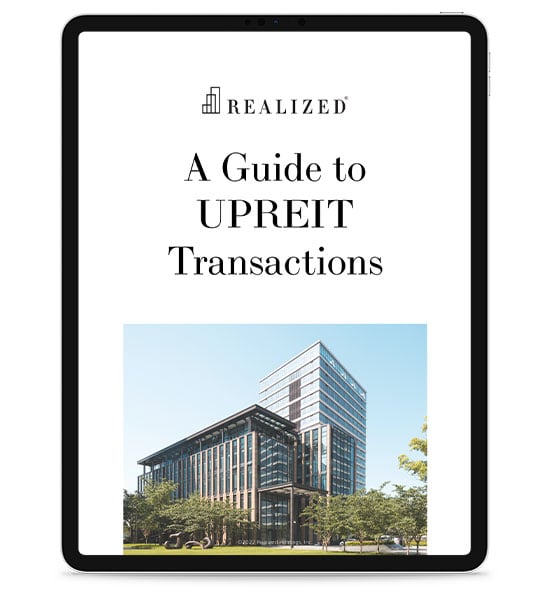
Real estate investment trusts (REITs) were created by Congress in 1960 as a way to give all investors an opportunity to invest in large-scale real estate.
An UPREIT, or an umbrella partnership real estate investment trust, and a DownREIT are two different corporate structures of REIT transactions. These arrangements allow investors to defer capital gains taxes on the sale of appreciated real estate property.
Below are the basics of UPREIT and DownREIT structures and how these two structures compare.
What is an UPREIT?
An UPREIT is an arrangement between the owner of appreciated real estate and a REIT where the property investor transfers real estate assets in exchange for operating partnership units, or OP Units, which are equal in value to REIT shares. This is done in a tax-deferred exchange, also known as a Section 721 exchange.
A 721 exchange has similar benefits as a 1031 exchange. In the case of UPREITS, capital gains are realized when the OP Units are sold, OP Units are converted to REIT shares, or the operating partnership sells the contributed property.
UPREITs can also be viewed as a wealth management tool for private real estate owners for tax management purposes.
What is a DownREIT?
A DownREIT is a joint venture between a real estate owner and a REIT for the purpose of acquiring and controlling real estate property. Property is transferred into a joint venture and like UPREIT transactions, investors can defer capital gains taxes.
Unlike an UPREIT, DownREIT investors form a joint venture with the REIT instead of an operating partnership. DownREIT structures are often more complicated and attract the attention of the IRS. In general, investment performance depends on the property, not the REIT’s portfolio.
DownREITs are usually preferred by investors who want to defer capital gains taxes on the sale of the appreciated property if they believe the value of their property will exceed the value of the REIT-owned property.
Comparing UPREITs and DownREITs
There are two big differences when you compare UPREITs to DownREITs:
- Tax benefits: UPREITs are more commonly used for their tax benefits and simplicity. Investors looking to avoid capital gains taxes prefer UPREITs since the transfer of appreciated real estate property doesn’t create a taxable event.
- Rate of return: If the property owner expects their property to appreciate more than the REIT’s portfolio, then DownREITs are preferred. Since a DownREIT is a joint venture, only the assets of the property owner are held at the partnership level. The performance of the partnership is separate from the REIT’s entire portfolio. The investor receives a form of put option which can then be converted into REIT shares. The conversion value is dependent on the property’s value at that time.
DownREITs can be rather complex and receive more scrutiny from the IRS, which is why investors may prefer the simplicity of the UPREIT structure. The DownREIT structure is used in situations where it’s more likely to be beneficial to the investor.
Through various REIT structures, it’s possible for smaller investors to gain access to real estate and to avoid capital gains tax liability.



